Just over a year ago (pre-Covid 19) I was excited to discover an antique half plate mahogany folding field camera had come in for auction at work. Supposedly from sometime around the 1890s, it was an impressive beast with a big shiny brass lens on the front plate and complex looking wooden contraption for a tripod, which would have probably taken two people to carry… In a fit of madness I placed a cheeky bid on it but sadly didn’t get to take it home. It ended up going way beyond what I (in my ignorance) though it was worth and to be brutally honest at that point in time it was of as much interest to me as a piece of art as it was a working camera.
Being totally new to the world of bellows and ground glass I really had no clue if it was actually fit for purpose or not, I was just fascinated with it more than anything. Having carefully opened it all up, attached the lens and inspected the bellows in the dark with a torch, I could see no holes or damage, the different aperture settings on the lens seemed to all work OK, but truth be told I was really just winging it. It may have looked like I knew what I was doing to my fellow employees, but sadly I hadn’t even used my old film camera for ages. That said, I still had a very keen interest in art and photography, and I’m always up for a challenge, so that’s how things ended up progressing from daydreaming to doing.
Getting hands on with an old wooden camera soon led me down the slippery slope of casually browsing other online auction houses and eBay for antique cameras despite not really knowing very much about them (not recommended by the way – this kind of quest is really best left to the people who know their onions or else it can quickly get expensive, the cameras are usually untested, so it’s up to you to check them out – plus where the hell do you put them all once you start collecting?). Hearing that I had shown an interest in the dark side, a friend of mine who also has an unhealthy interest in breathing life into old crumbly things, offered to lend me one of his ancient plate cameras and six suitable dark slides to have a play with. We met up for a brew one afternoon back in December 2019 and the seeds were sown.
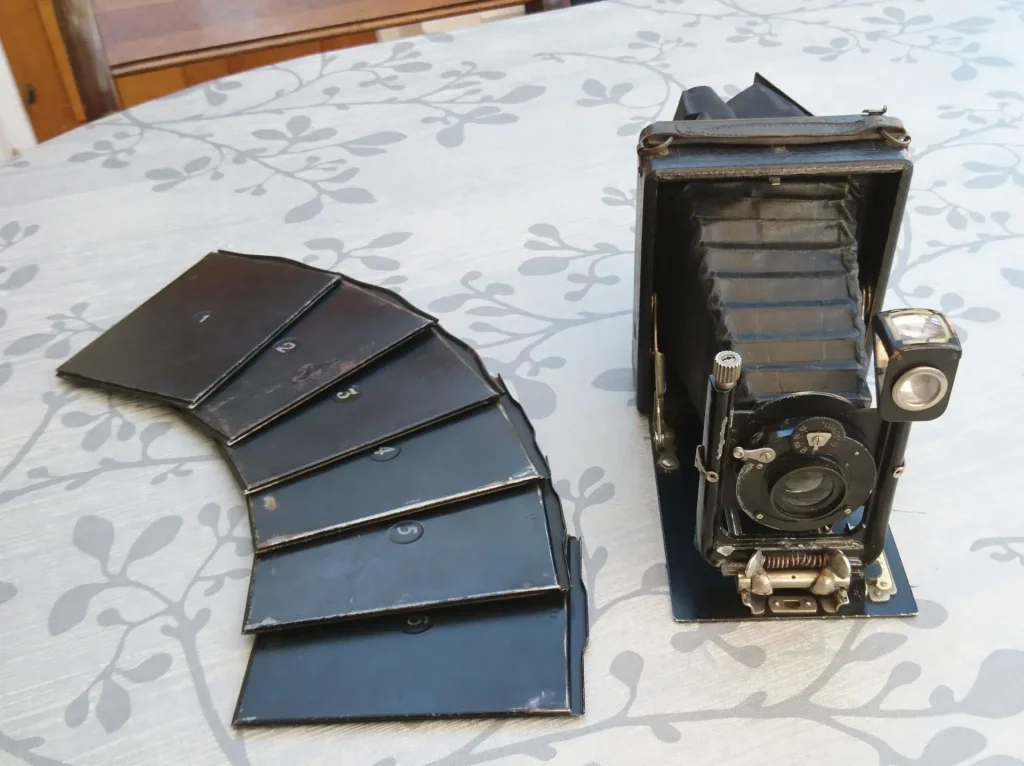
Rob gave me a basic rundown on how all the parts of the c.1910 quarter plate Butchers Cameo worked and fitted together, how to load paper into the dark slides and what ISO to expect from the paper of choice (Ilford Multigrade IV RC Deluxe Pearl at that time). So off I wobbled into the great unknown with my hastily scribbled notes and a bucket load of new-found photographic enthusiasm, really hoping that this old relic from the past might actually bless me with some half decent images.
A few days later, having attached the camera to a tripod (and been surprised the 100-year-old thread was compatible!), I got a few random bits and pieces together to make a low budget still life scene. Initially I found even just focusing the camera was a right rigmarole. Having chucked an old waterproof jacket over my head to keep out the light, I squinted through the little hinged flap at the back of the camera and used an old 8x loupe on the ground glass to try and ascertain if anything looked at all remotely sharp.
It was really tricky but in the end I finally figured out it was easiest to just set the lens to its widest aperture to get the brightest image on the glass, focus as best I could, then stop down to the desired aperture just before CAREFULLY swapping the backing plate for a dark slide and making the required exposure using the ‘T’ shutter setting on the front of the camera. After much trial and error, swearing and occasionally double exposing to add on a bit more exposure time ‘for luck’, I had at last shot my first 6 paper negatives. Phew! It felt like such an achievement, but obviously this was just the beginning. Now I needed to learn what to do with the exposed paper in order to actually see the results in my hands.
After much late night YouTube research and the purchase of a Paterson processing kit, I got hold of some ID11 film developer, some stop bath and fixer. I’d chosen the ID11 as I’d heard on one video that this was a better option (less contrasty) for paper negatives than a traditional multigrade paper developer, which would be more suitable for developing positives.
Needless to say, sitting here over a year down the line and looking back, I’ve now tried all sorts of developers and various different dilution ratios! Anyway, I digress… After splashing around in the makeshift darkroom with the safelight (I’d never used one before, so I didn’t realise they were so dim!) and an old red LED bicycle light clipped on my jumper, I finally produced my first 6 paper negatives which I quickly inverted on my phone, causing me to dance around the kitchen in delight like a mad woman.
Talk about beginners luck! I couldn’t believe I’d actually gone from what was basically a curious enthusiast to someone who vaguely had a clue what they were doing and could actually produce a reasonable image. Over the next week I tried another couple of test shots outside in the garden that also came out OK when developed so, still in a state of mild euphoria, I reloaded the 6 slides with fresh paper and packed up everything for the little trip to Dorset we had on the horizon.
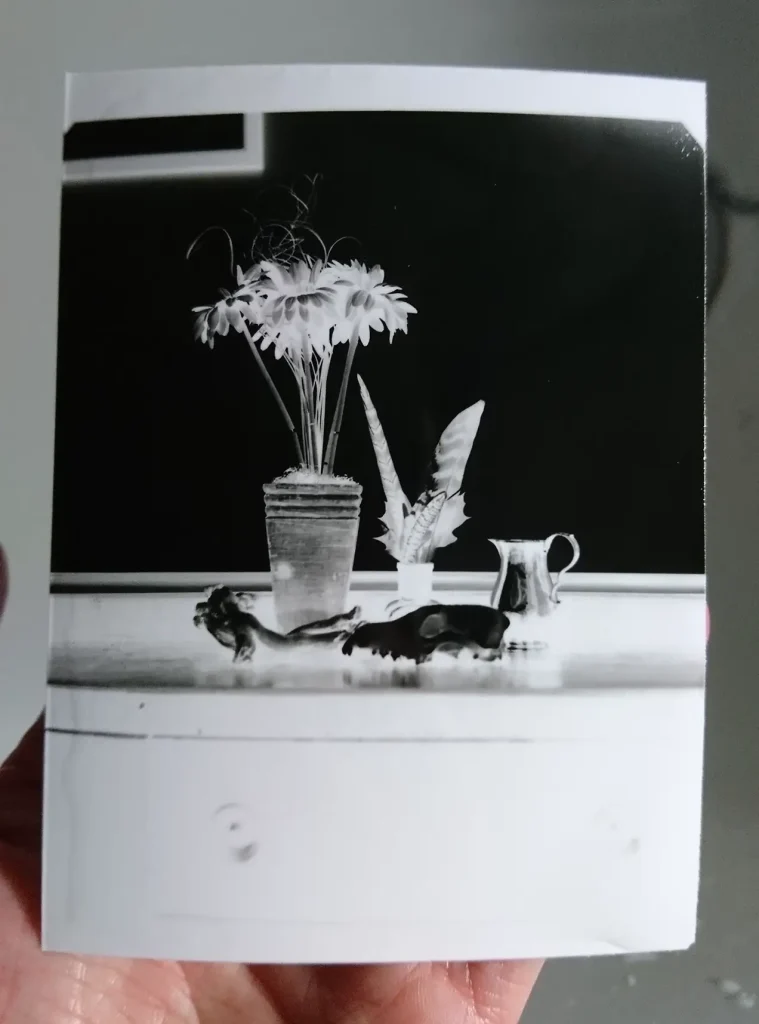
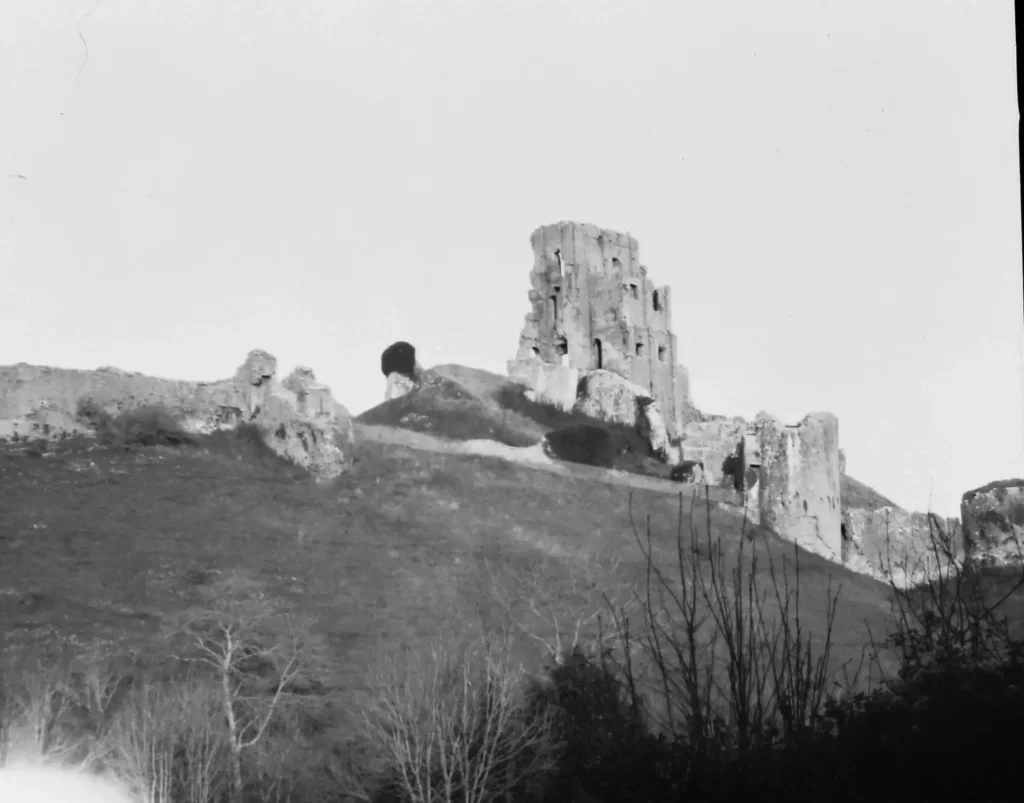
We were lucky enough to be staying in a cottage for a few days which was pretty much in the back garden of Corfe Castle. This meant I could go out for a mooch with the Cameo and loaded dark slides in my bag and a tripod over my shoulder. The whole setup was light enough to cart about and relatively easy to get out and set up, but I was still looking at about half and hour per shot by the time I’d got things level, taken meter readings, got the focus sorted out and swapped out the back plate for a dark slide.
The light wasn’t great as it was mid-December and drizzling, but I’d found from my initial experiments at home this was not a bad thing because outdoor scenes with too much contrast and bright sun were harder to work out the best exposure for. The other bonus with the cold damp weather was that I pretty much had the village to myself, so I didn’t feel rushed and there were plenty of interesting things within walking distance of our base to take photos of.
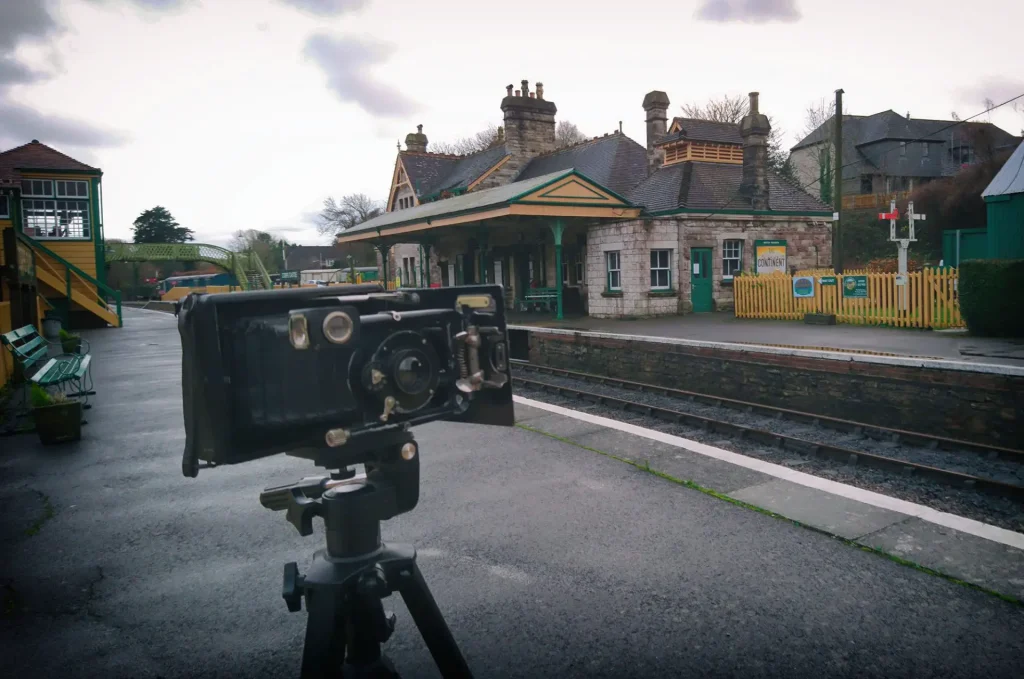
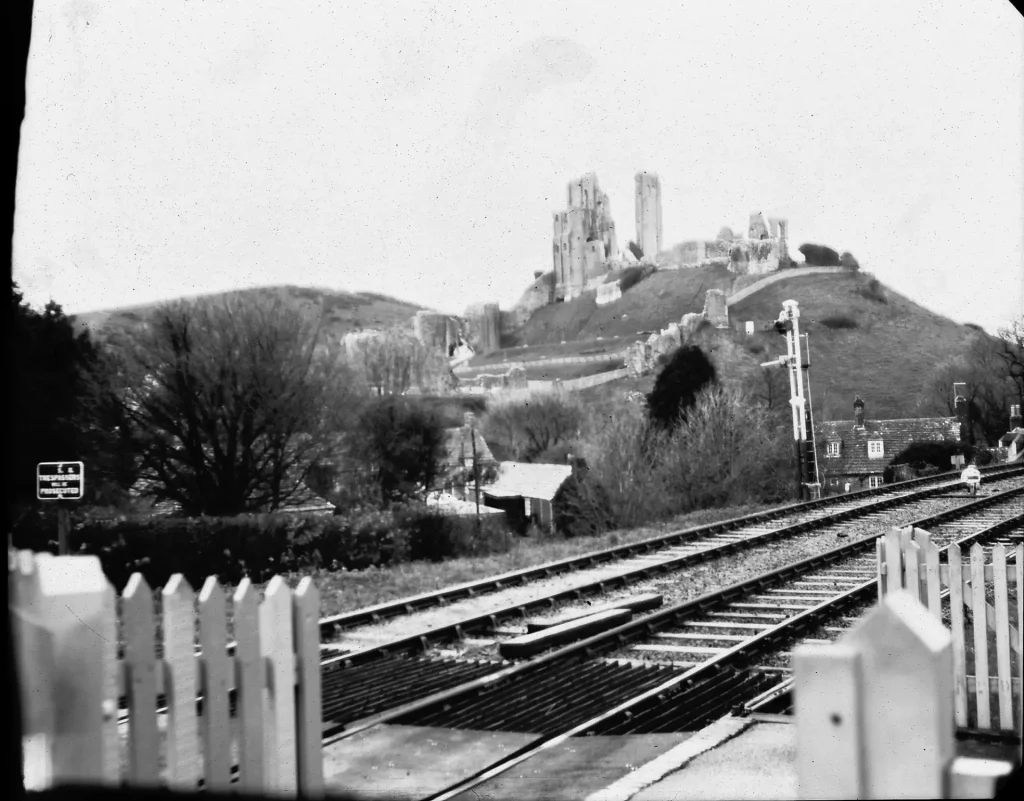
Needless to say at least half of the photos from that first trip out in the field had dubious focus or were a bit off exposure wise, but I can’t lie, it was fun and the fact I had to actually wait more than five minutes to see my results did make the whole experience a lot more rewarding. As each exposure wasn’t just a quick ‘throw away’ shot like with a digital camera, I found myself putting a lot more effort into actually getting the composition and exposure correct… Or at least what I hoped would be correct – it was a steep learning curve as I can’t get the horizon straight at the best of times! I really enjoyed the whole experience though, I must admit.
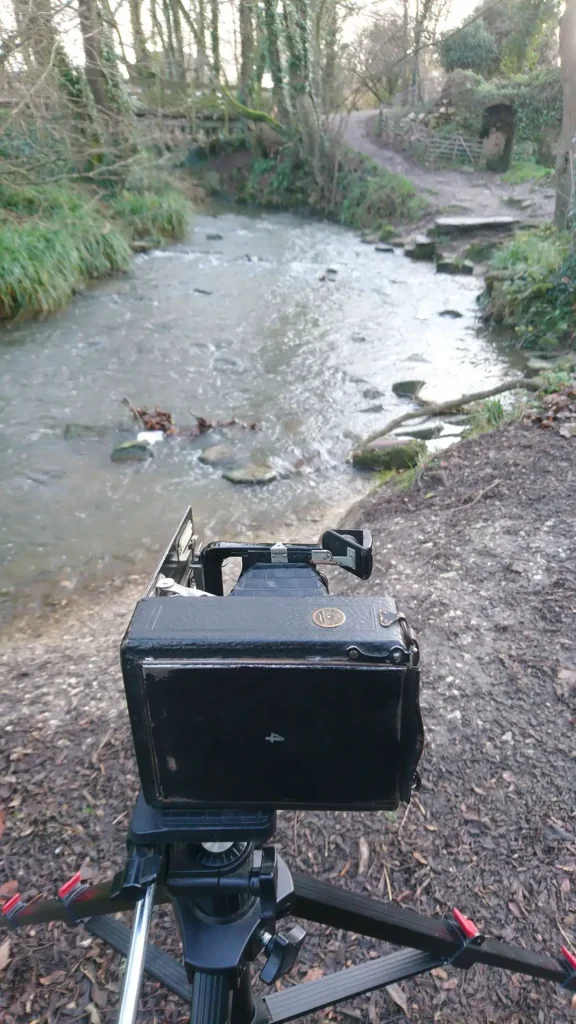
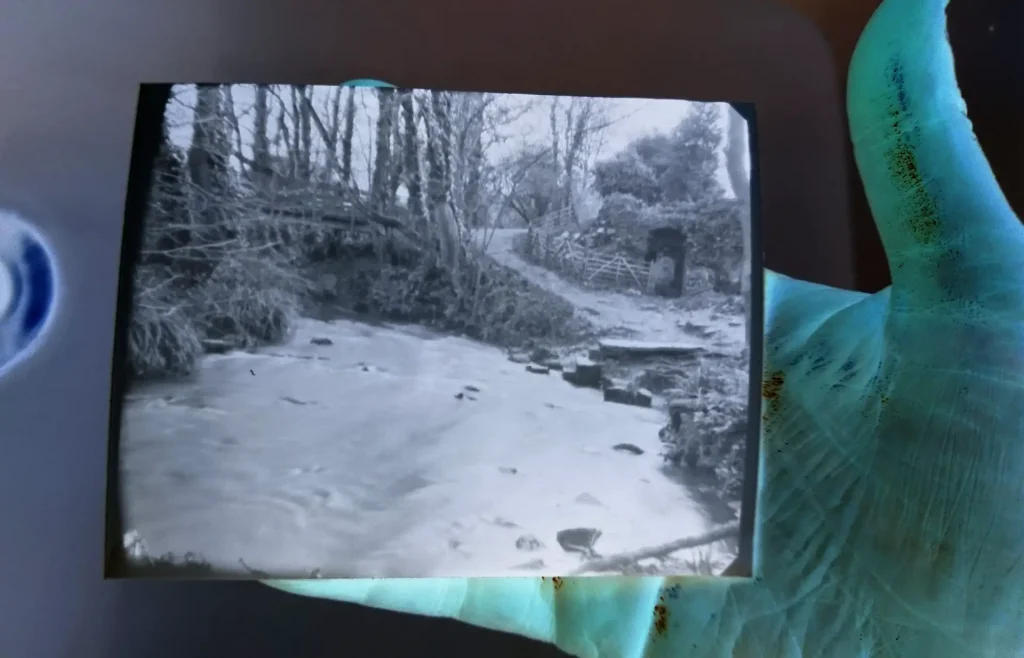
Back home and with a few more rounds of shooting and developing the paper negatives under my belt, Rob (presumably noticing via social media that I was still having a blast using his old camera) ended up very kindly offering to sell me The Cameo, and the 6 dark slides for a song. Naturally I took his arm off!
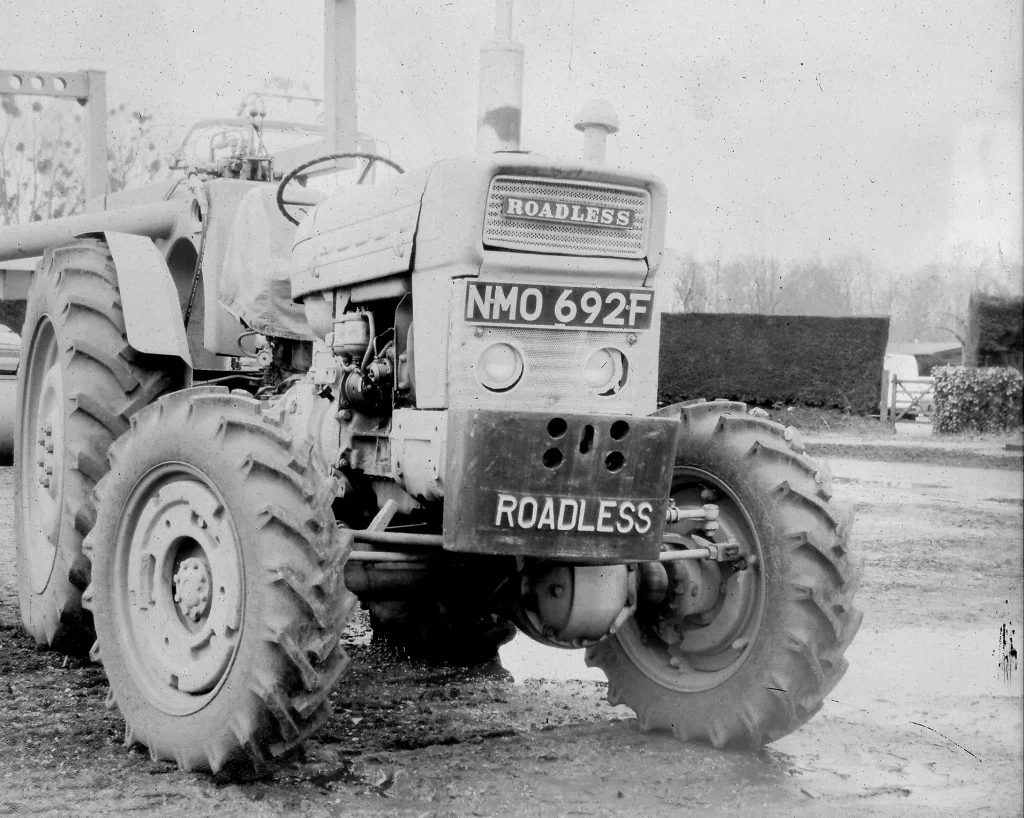
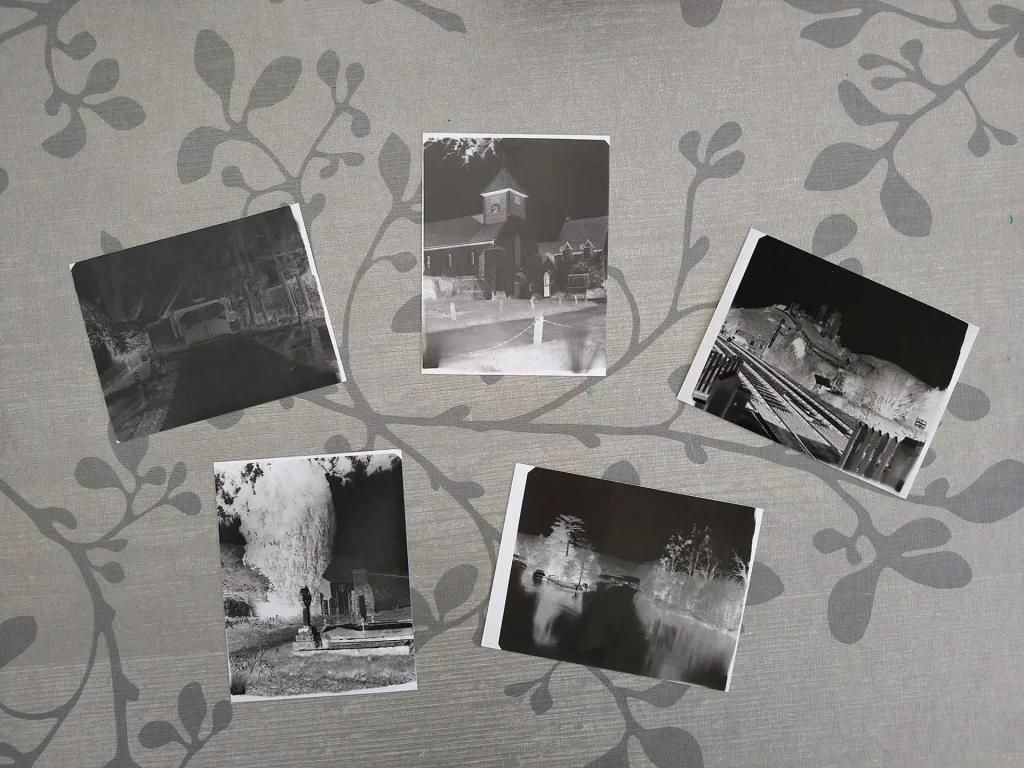
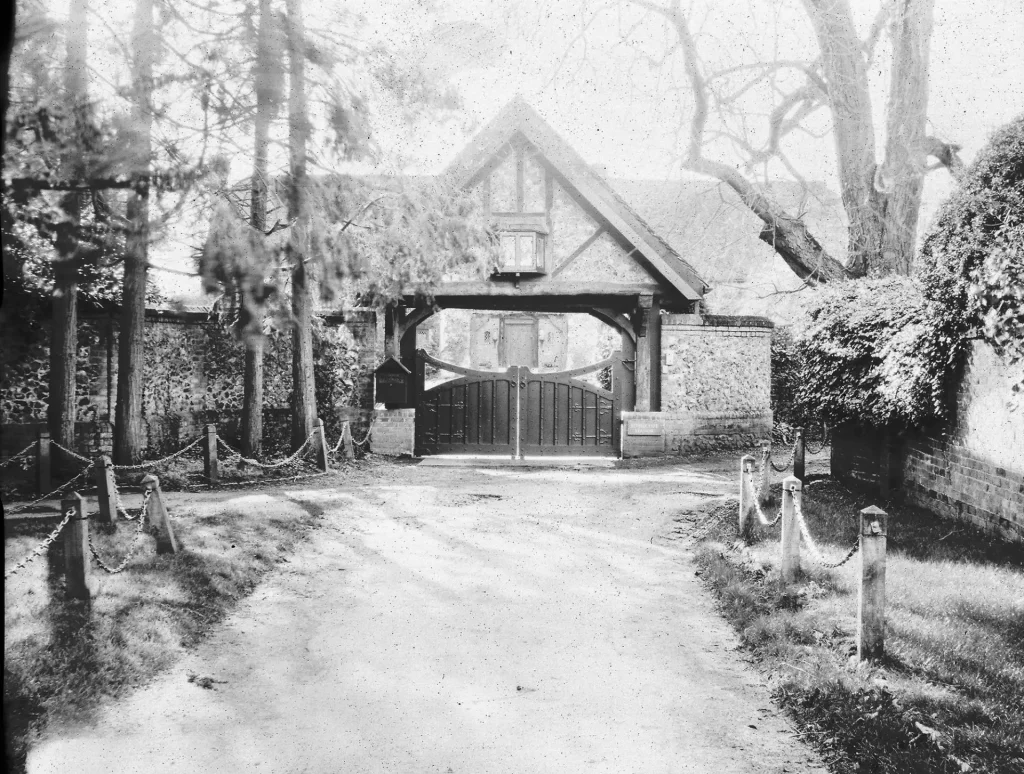
A little over a year down the line I’ve probably got 50 or 60 shots under my belt now using the paper negatives, I even ended up making a small pinhole camera over the first lockdown period for further experimentation and out of general curiosity/boredom (I had pretty much all the equipment needed to hand anyway, so it seemed like a good idea).
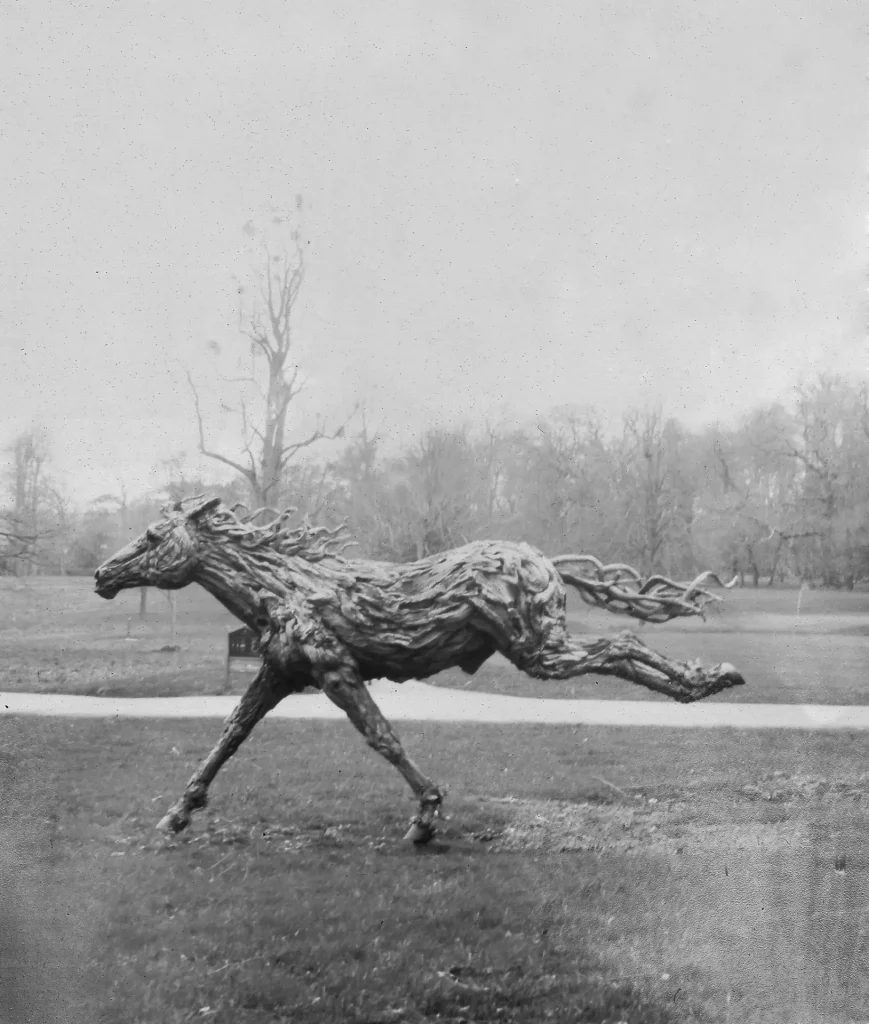
I have always tried to make basic notes on all the settings used to shoot and develop each image and have now tried a few different papers, developers and even pre-flashing the paper before loading it in the slides. I honestly can’t wait to get out and about again and have some more fun with it once the lockdown restrictions are eased a little. Not only that, but I’m pretty sure this is the kind of thing I’m going to continue to enjoy playing about with for a good few more years to come! I still secretly fancy a nice wooden half plate one day, but this little lightweight pocket rocket will certainly do me for now.
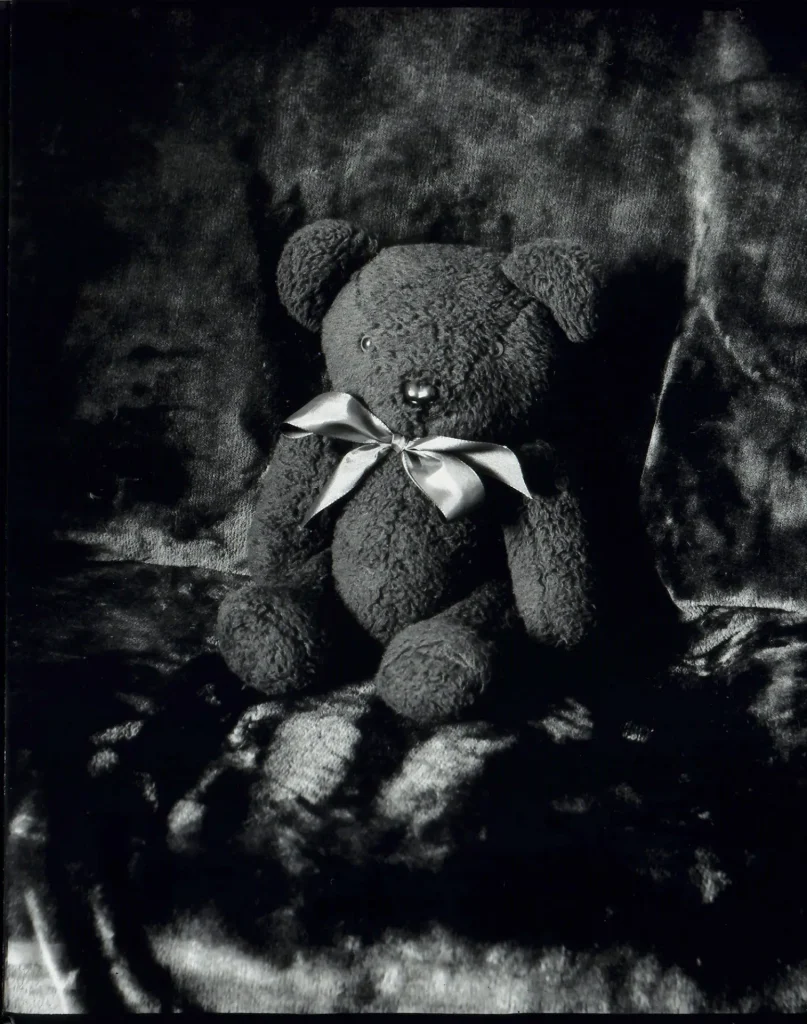
If you stuck with me through all that waffle, then thank you! If you would like to see more of what I get up to my website is www.theartcasts.com
I can also be found lurking on Instagram and Facebook too.
Share this post:
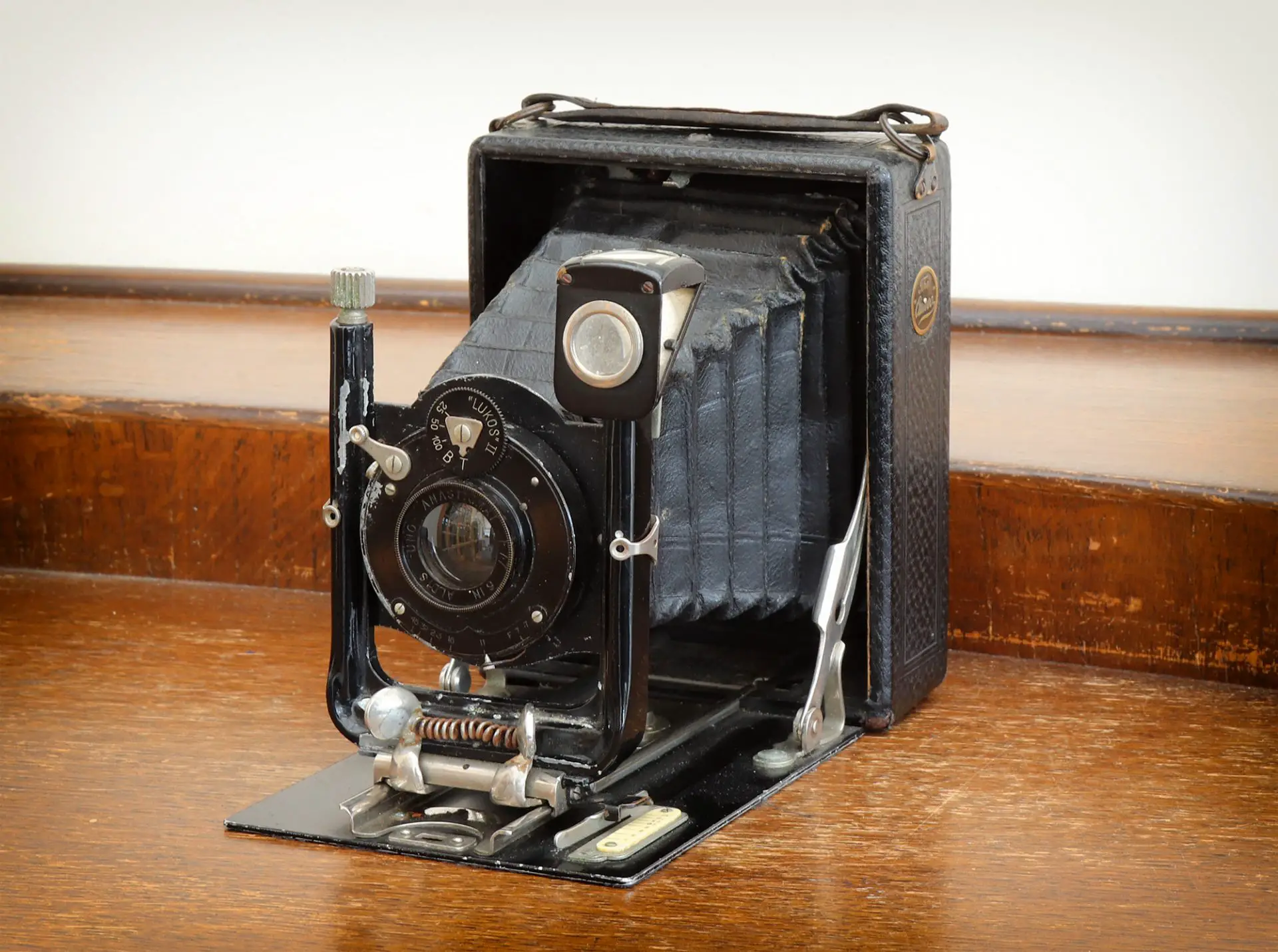








Comments
Markus Larjomaa on Butchers Cameo Quarter Plate Camera – By Emma Wheeler
Comment posted: 30/03/2021
To set the terminology straight: you load the film (or paper in your case) in a film holder (a plate holder in your camera). Dark slide is the removable sheet of metal on the holder that protects the film from light and is removed just before exposure when it's attached to the camera.
By the way, have you tried positive paper? It's fun! Kinda like non-instant polaroid :). I like to make one-off, unique images on positive paper. And it's way cheaper (and easier and safer!) than, say, wet plates.
Comment posted: 30/03/2021
steve curzon on Butchers Cameo Quarter Plate Camera – By Emma Wheeler
Comment posted: 30/03/2021
Comment posted: 30/03/2021
Tobias Eriksson on Butchers Cameo Quarter Plate Camera – By Emma Wheeler
Comment posted: 30/03/2021
Comment posted: 30/03/2021
davesurrey on Butchers Cameo Quarter Plate Camera – By Emma Wheeler
Comment posted: 30/03/2021
My oldest camera is a Folding "Pocket" Kodak from 1909 but it uses this modern stuff called film, rather than plates.
I must get one.
Thanks for an interesting read.
Dave
Comment posted: 30/03/2021
TobyVPhoto on Butchers Cameo Quarter Plate Camera – By Emma Wheeler
Comment posted: 30/03/2021
I have desired to be a large format shooter for a while, but 'modern' cameras don't really do it for me. Early 20thC cameras, they do sound right up my cup of tea.
Comment posted: 30/03/2021
Kurt Ingham on Butchers Cameo Quarter Plate Camera – By Emma Wheeler
Comment posted: 31/03/2021
Comment posted: 31/03/2021
Clive W on Butchers Cameo Quarter Plate Camera – By Emma Wheeler
Comment posted: 31/03/2021
Comment posted: 31/03/2021
Keith W on Butchers Cameo Quarter Plate Camera – By Emma Wheeler
Comment posted: 31/03/2021
I always love it when folk actually use old cameras rather than just leaving them to gather dust on a shelf or as some sort of "trophy" in a cabinet. They were made to be used.
One final thought. A few years ago I saw an interesting street photography project carried out with this type of camera. Firstly, the long exposures caused all sorts of ghostly figures to appear, whilst still giving a clear repreesentation of place. Secondly, the camera drew people to it because of it's appearance. Rather than feeling suspicious about the process, it was remarkable the number of people who would actually ask to get their "photo taken with the old camera" despite the length of time they had to sit still.
Thanks for posting and I look forward to seeing more photographs and hearing more about your project in your next article.
Comment posted: 31/03/2021
Lee on Butchers Cameo Quarter Plate Camera – By Emma Wheeler
Comment posted: 31/03/2021
Comment posted: 31/03/2021
Alan Stubbingd on Butchers Cameo Quarter Plate Camera – By Emma Wheeler
Comment posted: 05/02/2022